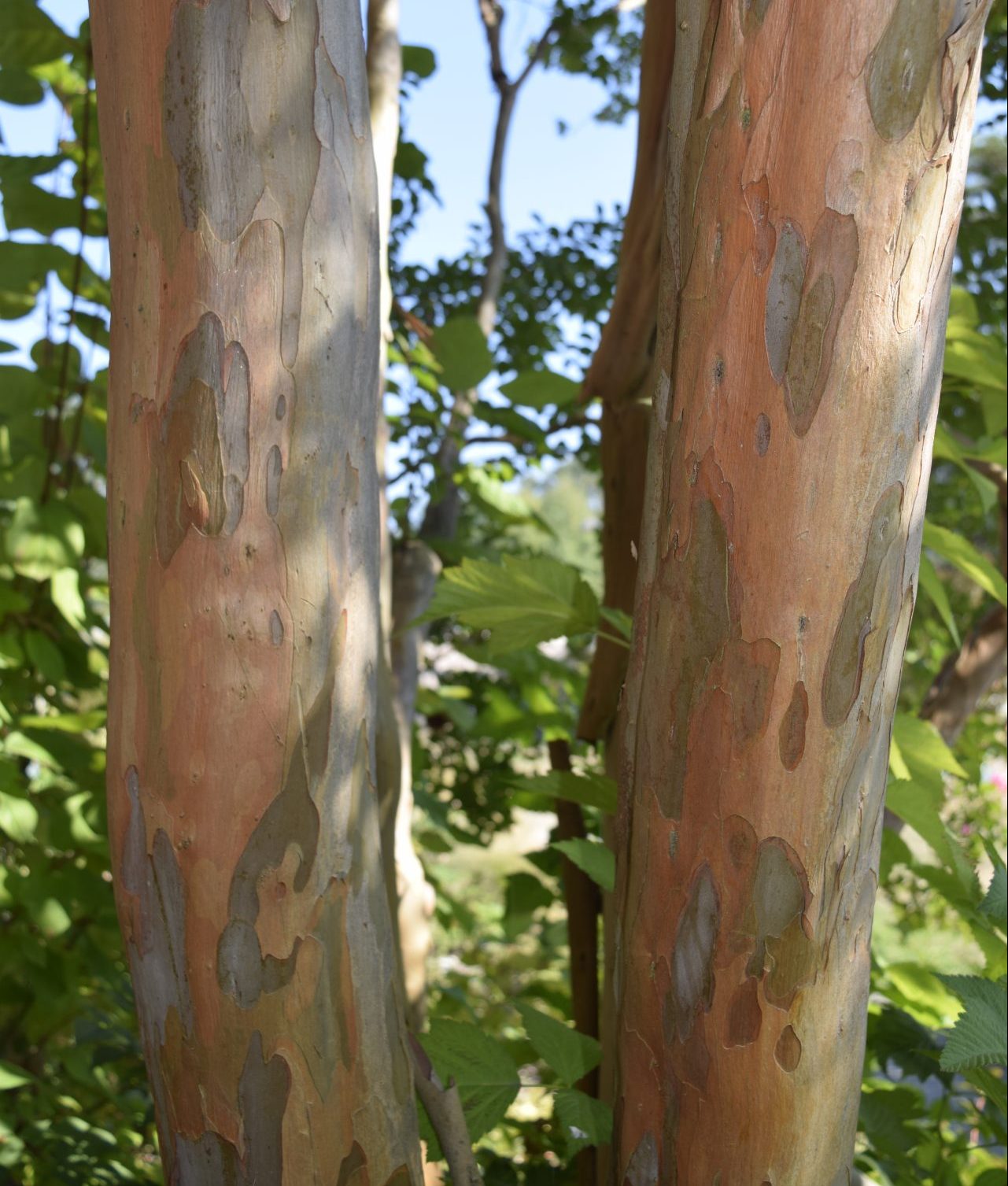October 2022 Plant Profile: Crape Myrtle
Common Name: Crape Myrtle
Scientific Name: Lagerstroemia indica

Location: Specimen is located at the Center for Urban Horticulture (CUH) in the South Slope/CUH-SS planting region map. It’s growing against the south wall of Isaacson classroom. You can view the planting region map here.
Origin: Lagerstroemia indica, is a deciduous tree native of China, Korea and nearby SE Asia. It has naturalized in India and widely cultivated in the US from Maryland to Florida and Texas to the Pacific Coast. Linnaeus named it after his Swedish friend, Magnus von Lagerstroem (1696-1759). Introduced to Kew in 1759. Our specimen, 768-58*A, was received as a layer in Sept 1958 from the UW Medicinal Herb Garden. Accession 768-58*A has undergone several transplants during its lifetime, originally planted outside the old visitor center in 1963. We moved it to our Mediterranean display in 1984, where it remained until a snowstorm in Feb 1990 uprooted it. It was successfully moved to its current location, south side of Isaacson classroom, in March 1990.

Height and Spread: Numerous cultivars of varying sizes. An excellent small garden tree! Our CUH specimen, which is the type species (not a variety), is over 30’ tall with a 20’ spread!
Bloom/Berry time:
Blooms July through September and into October!
Overview: I’ve been touting crape myrtle as Seattle’s “tree of the future” for years now. And, because of climate change, I daresay, the future is now! Lagerstroemia indica is a beautiful tree for all seasons; outstanding in flower, fall color and winter bark interest. It is exceedingly drought tolerant and well adapted to thrive and perform well throughout our wet winters and longer and drier summer periods. Case in point, this year, our extended summer is going well into October and it’s still blooming! For a general overview of Lagerstroemia indica, please visit the UW Brockman tree tour.

Allegedly, the one on campus, the mother of ours, is the state champion! I’ve asked Sara Shores, UW Campus Urban Forest Specialist, to take measurements, as I will for the one at CUH, to determine which of the two is now the largest. Our CUH specimen has significant meaning to me personally. It was accessioned into our plant collection in 1958, the same year I was born. I remember it in its original home when I started my career at the Arboretum in late 1981. And, most importantly, I was fortunate to serve as its caretaker helping it survive several winter storms and challenging transplants. And, lo and behold, we’ll soon know if it’s our new state champion crape myrtle! If not, being #2 is fine with me! 😊
Care: Low maintenance once established, no pest problems. I do still recommend planting in a protected southern exposure for prevention of winter freeze damage and more reliable flowering.
